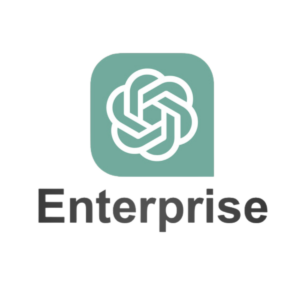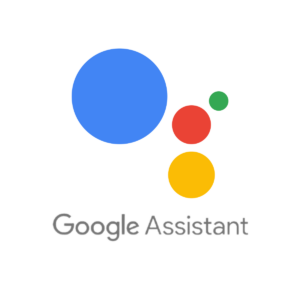AI for Education
AI for Education – Personalized Learning & Smart Tutoring Solutions
The education sector is experiencing a significant transformation fueled by Artificial Intelligence (AI). From personalized learning pathways to streamlined administrative processes,
AI is revolutionizing how educational institutions operate and how students learn. This comprehensive guide delves into the various applications of AI in education, highlighting its benefits, real-world implementations, and future trends that promise to enhance the educational landscape further.
Understanding AI in Education
Artificial Intelligence has become a pivotal technology in modern education, offering innovative solutions to long-standing challenges. To fully comprehend AI’s impact on education, it’s essential to understand its core concepts and its vital role in addressing the evolving needs of educators and learners alike.
The Importance of AI in Education
Integrating AI into education addresses critical challenges and offers numerous benefits, transforming teaching and administrative processes. Key areas where AI makes a significant impact include:
- Personalized Learning: AI tailors educational content to meet student needs and learning paces.
- Administrative Efficiency: Automation of routine tasks reduces the administrative burden on educators and institutions.
- Enhanced Student Engagement: AI-driven tools foster interactive and engaging learning environments.
- Data-Driven Insights: AI analyzes educational data to provide actionable insights for improving teaching strategies and outcomes.
- Accessibility and Inclusivity: AI technologies make education more accessible to students with diverse needs and backgrounds.
Key Areas Where AI Transforms Education
AI’s versatility allows it to revolutionize various facets of the education sector. Below, we explore the primary areas where AI is making a transformative impact, illustrating how educational institutions leverage these technologies to enhance their operations and learning experiences.
Personalized Learning
Personalized learning is at the forefront of AI’s impact on education. By analyzing individual student data, AI can create customized learning pathways catering to each student’s strengths, weaknesses, and learning styles.
Intelligent Tutoring Systems
AI-powered intelligent tutoring systems provide one-on-one instruction to students, adapting lessons based on real-time performance and understanding. These systems offer immediate feedback, helping students grasp complex concepts more effectively.
Example: Carnegie Learning utilizes AI to offer personalized math tutoring, adjusting the difficulty and type of problems based on each student’s progress and performance.
Adaptive Learning Platforms
Adaptive learning platforms use AI to modify educational content dynamically, ensuring that students receive material that is neither too challenging nor too simplistic. This customization enhances student engagement and improves learning outcomes.
Example: DreamBox Learning employs AI to adapt its math curriculum in real-time, providing personalized lessons that cater to each student’s learning pace and style.
Administrative Efficiency
AI significantly enhances administrative efficiency in educational institutions by automating routine tasks, thereby reducing the workload on staff and allowing them to focus on more strategic initiatives.
Automated Grading and Assessment
AI systems can automatically grade assignments and assessments, providing instant student feedback and saving educators valuable time.
Example: Gradescope leverages AI to assist in grading standardized tests and assignments, ensuring consistency and reducing the time required for manual grading.
Enrollment and Admissions Management
AI-driven systems streamline the enrollment and admissions processes by automating application reviews, predicting student success, and managing communications.
Example: Admissions.ai uses machine learning algorithms to evaluate student applications, identifying candidates most likely to succeed based on historical data and predefined criteria.
Enhanced Student Engagement
AI fosters enhanced student engagement by creating interactive and immersive learning environments that capture students’ attention and encourage active participation.
Virtual Classrooms and AI Tutors
AI-powered virtual classrooms and tutors provide interactive learning experiences, enabling students to engage with educational content in new and exciting ways.
Example: Squirrel AI offers an AI-driven virtual classroom experience where students can interact with AI tutors who provide personalized guidance and support.
Gamified Learning Experiences
AI integrates gamification elements into learning platforms, making education more enjoyable and motivating for students.
Example: Kahoot! incorporates AI to create adaptive quizzes and games that adjust to each student’s knowledge level, enhancing motivation and engagement.
Data-Driven Insights
AI analyzes vast amounts of educational data to provide actionable insights that inform teaching strategies, curriculum development, and student support services.
Predictive Analytics for Student Success
AI-driven predictive analytics identify students at risk of underperforming or dropping out, enabling proactive interventions to support their academic success.
Example: BrightBytes uses AI to analyze student data, predict academic outcomes and provide educators with insights to tailor interventions and support mechanisms.
Curriculum Development and Optimization
AI assists in developing and optimising curricula by analyzing educational trends, student performance data, and industry demands.
Example: Content Technologies, Inc. leverages AI to develop adaptive curricula that align with current educational standards and industry requirements, ensuring relevance and effectiveness.
Accessibility and Inclusivity
AI technologies make education more accessible and inclusive, catering to students with diverse needs and backgrounds.
Speech-to-Text and Text-to-Speech
AI-powered speech-to-text and text-to-speech tools assist students with hearing impairments or learning disabilities, enhancing their ability to participate fully in educational activities.
Example: Otter.ai provides real-time transcription services, enabling students with hearing impairments to access lectures and discussions seamlessly.
Language Translation and Learning
AI-driven language translation and learning tools support multilingual education, making learning materials accessible to students from diverse linguistic backgrounds.
Example: Duolingo utilizes AI to offer personalized language learning experiences, adapting lessons based on each student’s proficiency and progress.
Case Studies: Successful AI Integration in Education
Real-world implementations of AI in education demonstrate its transformative potential. The following case studies highlight how leading educational institutions and companies have successfully integrated AI to enhance their operations, improve student outcomes, and deliver superior learning experiences.
All these firms have successfully implemented the best practices to integrate AI into their business.
Carnegie Learning: AI-Powered Math Tutoring
Challenge: Traditional math tutoring methods were time-consuming and not scalable to meet the needs of all students.
Solution: Carnegie Learning developed an AI-powered math tutoring system that provides students personalized instruction and real-time feedback.
Result: The AI tutoring system improved student math scores by an average of 30%, demonstrating significant gains in understanding and performance.
Arizona State University: Automated Admissions Processing
Challenge: Managing large applications during peak admissions periods was resource-intensive and prone to delays.
Solution: Arizona State University implemented an AI-driven admissions system that automates the review and evaluation of applications.
Result: The AI system reduced the processing time by 50%, allowing the admissions team to handle more applications efficiently while maintaining high evaluation standards.
Squirrel AI: Virtual Classrooms for Personalized Learning
Challenge: Providing individualized attention to students in large classrooms was challenging, leading to gaps in understanding and engagement.
Solution: Squirrel AI introduced AI-powered virtual classrooms that offer personalized learning experiences tailored to each student’s needs.
Result: The virtual classrooms increased student engagement by 40% and improved overall academic performance, highlighting the effectiveness of personalized AI-driven instruction.
BrightBytes: Predictive Analytics for Student Support
Challenge: Identifying and supporting students at risk of underperforming or dropping out was difficult due to the lack of timely and actionable data.
Solution: BrightBytes implemented AI-driven predictive analytics to analyze student data and identify those at risk.
Result: The predictive analytics tool enabled proactive interventions, reducing dropout rates by 20% and enhancing overall student success.
Duolingo: AI-Enhanced Language Learning
Challenge: Providing effective and scalable language learning solutions that adapt to individual learner’s progress and proficiency levels.
Solution: Duolingo leveraged AI to create adaptive language learning modules that personalize lessons based on each user’s performance.
Result: The AI-enhanced platform increased user engagement by 35% and improved language proficiency outcomes, making language learning more effective and enjoyable.
Benefits of Integrating AI into Education
The integration of AI into educational operations offers a multitude of advantages that can significantly enhance the performance and competitiveness of educational institutions. These benefits extend beyond mere operational improvements, providing deeper insights and superior learning experiences.
Enhanced Efficiency
AI automates repetitive tasks, reducing the time and resources required for operations such as grading, scheduling, and administrative management. This automation minimizes operational bottlenecks, allowing educators and administrators to focus on strategic activities that add excellent value to the institution.
Improved Learning Outcomes
AI-driven personalized learning ensures students receive education tailored to their unique needs and learning styles. This customization enhances understanding, retention, and application of knowledge, leading to improved academic performance and overall learning outcomes.
Cost Savings
By automating administrative and operational tasks, AI reduces the need for manual labor, leading to significant cost savings. These savings can be reinvested into other areas of the institution, fostering growth, innovation, and the development of new educational programs and resources.
Better Student Support
AI provides data-driven insights that enable proactive student support services. By identifying students at risk of underperforming or dropping out, educational institutions can implement timely interventions to support their academic and personal success.
Superior Accessibility
AI technologies make education more accessible to students with diverse needs, including those with disabilities and those from different linguistic backgrounds. This inclusivity ensures that all students have equal opportunities to succeed academically.
Challenges and Considerations Before Implementing AI in Education
While AI integration offers numerous benefits, educational institutions must navigate several challenges to ensure successful implementation. Addressing these considerations is crucial for maximizing AI’s potential and maintaining operational integrity.
Data Privacy and Security
Handling sensitive student data necessitates strict adherence to data privacy regulations and robust security measures. Protecting against data breaches and unauthorized access is paramount to maintaining student trust and regulatory compliance.
Ethical AI Usage
Ensuring that AI systems operate ethically involves preventing biases and promoting fairness in decision-making processes. Transparent AI algorithms and ethical guidelines are essential to avoid unintended negative consequences and maintain stakeholder trust.
Integration with Legacy Systems
Seamlessly integrating AI solutions with existing legacy systems can be complex and resource-intensive. Ensuring compatibility and smooth data flow between AI tools and current infrastructure is crucial for successful implementation.
Skill Gaps and Training
Implementing and managing AI systems require specialized skills that may be lacking within the organization. Investing in training programs or hiring AI experts is essential to bridge these skill gaps and fully leverage AI technologies.
Regulatory Compliance
AI applications in education must comply with stringent regulatory standards to ensure safety and efficacy. Navigating the complex regulatory landscape is necessary to gain approval and trust in AI-driven educational solutions.
Future Trends: AI in Education
The education industry continues to evolve with advancements in AI technology, paving the way for innovative solutions and transformative practices. Staying abreast of these trends will enable educational institutions to maintain a competitive edge and meet the dynamic needs of their students.
Advanced Personalized Learning
AI will enable even more sophisticated personalized learning experiences by integrating diverse data sources, including behavioural data, learning preferences, and real-time performance metrics. This integration will allow for highly tailored educational content that adapts dynamically to each student’s evolving needs.
Enhanced Virtual and Augmented Reality
AI will significantly enhance virtual and augmented reality (VR/AR) applications in education, creating immersive learning environments that foster more profound understanding and engagement.
AI-Driven Content Creation
AI will assist educators in creating dynamic and interactive educational content, such as simulations, interactive textbooks, and multimedia presentations, making learning more engaging and effective.
Predictive Analytics for Curriculum Development
AI will leverage predictive analytics to inform curriculum development, ensuring educational programs align with future industry demands and student career aspirations.
AI in Lifelong Learning and Professional Development
AI will support lifelong learning initiatives and professional development programs by providing personalized learning pathways, skill assessments, and adaptive training modules tailored to individual career goals and industry trends.
How to Get Started with AI in Education
Embarking on the AI integration journey requires strategic planning and thoughtful execution. Educational institutions can follow these steps to effectively incorporate AI technologies into their operations, ensuring a smooth transition and maximizing the benefits of AI.
Identify Your Needs
Begin by assessing your educational institution’s specific challenges and opportunities. Determine which areas—such as personalized learning, administrative efficiency, or student engagement—can benefit most from AI integration. Conducting a thorough needs analysis will help prioritize AI initiatives that align with your strategic goals.
Choose the Right Tools
Explore the AI tools and platforms available in the AI Tools section of Replace Humans. Select solutions aligning with your educational goals, budget, and infrastructure to ensure a seamless integration process. Consider factors such as scalability, compatibility, and vendor support when selecting.
Implement and Train AI in the Education Process
Start with pilot projects to test the effectiveness of AI tools in your institution. Pilot implementations allow you to evaluate the performance and impact of AI solutions on a smaller scale before full-scale deployment. Provide comprehensive training to your team to ensure they can effectively use and interpret AI-driven insights, maximizing the benefits of the technology.
Monitor and Optimize
Regularly evaluate the performance of your AI systems by tracking key metrics and gathering user feedback. Use this data to optimize AI integrations and continuously improve educational services, ensuring sustained success and adaptability. Implementing a continuous improvement framework will help you stay ahead of technological advancements and evolving educational needs.
Artificial Intelligence is revolutionizing the education sector, offering unparalleled opportunities to enhance learning experiences, improve operational efficiency, and deliver superior educational outcomes. By integrating AI-driven solutions, educational institutions can stay competitive, support student success, and meet the evolving needs of learners in an increasingly digital world.
However, successful AI implementation in education requires careful planning, ethical considerations, and ongoing management. Addressing challenges such as data privacy, skill gaps, and regulatory compliance is essential to harness the full potential of AI while maintaining trust and integrity.
As AI technology continues to advance, its role in shaping the future of education will only become more significant, providing innovative solutions that address the dynamic challenges and opportunities in the educational landscape. For organizations ready to embrace AI, the AI Tools section on Replace Humans offers a curated selection of AI solutions and expert consulting services to support your journey towards a more intelligent and efficient educational system.
Ready to Transform Your Educational Operations?
Explore the AI Tools section on Replace Humans today to discover innovative AI solutions tailored to your educational needs. Whether you want to enhance personalized learning, automate administrative tasks, or boost student engagement, our directory provides the tools and expertise you need to revolutionize your educational operations and achieve outstanding results.
Showing all 6 results
-

Apple Siri – Intelligent Voice Assistant for Apple Devices
Try it -

ChatGPT Enterprise – Advanced AI Virtual Assistant for Business
Try it -

DALL-E by OpenAI – AI Image Generator for Original Artwork
Try it -

Google Assistant – Voice-Activated Virtual Assistant for All Devices
Try it -

Trello – Visual Project Management & Task Tracking
Try it -

Wordtune – AI Writing Companion for Real-Time Editing & Rewriting
Try it
AI for Education – Personalized Learning & Smart Tutoring Solutions
The education sector is experiencing a significant transformation fueled by Artificial Intelligence (AI). From personalized learning pathways to streamlined administrative processes,
AI is revolutionizing how educational institutions operate and how students learn. This comprehensive guide delves into the various applications of AI in education, highlighting its benefits, real-world implementations, and future trends that promise to enhance the educational landscape further.
Understanding AI in Education
Artificial Intelligence has become a pivotal technology in modern education, offering innovative solutions to long-standing challenges. To fully comprehend AI’s impact on education, it’s essential to understand its core concepts and its vital role in addressing the evolving needs of educators and learners alike.
The Importance of AI in Education
Integrating AI into education addresses critical challenges and offers numerous benefits, transforming teaching and administrative processes. Key areas where AI makes a significant impact include:
- Personalized Learning: AI tailors educational content to meet student needs and learning paces.
- Administrative Efficiency: Automation of routine tasks reduces the administrative burden on educators and institutions.
- Enhanced Student Engagement: AI-driven tools foster interactive and engaging learning environments.
- Data-Driven Insights: AI analyzes educational data to provide actionable insights for improving teaching strategies and outcomes.
- Accessibility and Inclusivity: AI technologies make education more accessible to students with diverse needs and backgrounds.
Key Areas Where AI Transforms Education
AI’s versatility allows it to revolutionize various facets of the education sector. Below, we explore the primary areas where AI is making a transformative impact, illustrating how educational institutions leverage these technologies to enhance their operations and learning experiences.
Personalized Learning
Personalized learning is at the forefront of AI’s impact on education. By analyzing individual student data, AI can create customized learning pathways catering to each student’s strengths, weaknesses, and learning styles.
Intelligent Tutoring Systems
AI-powered intelligent tutoring systems provide one-on-one instruction to students, adapting lessons based on real-time performance and understanding. These systems offer immediate feedback, helping students grasp complex concepts more effectively.
Example: Carnegie Learning utilizes AI to offer personalized math tutoring, adjusting the difficulty and type of problems based on each student’s progress and performance.
Adaptive Learning Platforms
Adaptive learning platforms use AI to modify educational content dynamically, ensuring that students receive material that is neither too challenging nor too simplistic. This customization enhances student engagement and improves learning outcomes.
Example: DreamBox Learning employs AI to adapt its math curriculum in real-time, providing personalized lessons that cater to each student’s learning pace and style.
Administrative Efficiency
AI significantly enhances administrative efficiency in educational institutions by automating routine tasks, thereby reducing the workload on staff and allowing them to focus on more strategic initiatives.
Automated Grading and Assessment
AI systems can automatically grade assignments and assessments, providing instant student feedback and saving educators valuable time.
Example: Gradescope leverages AI to assist in grading standardized tests and assignments, ensuring consistency and reducing the time required for manual grading.
Enrollment and Admissions Management
AI-driven systems streamline the enrollment and admissions processes by automating application reviews, predicting student success, and managing communications.
Example: Admissions.ai uses machine learning algorithms to evaluate student applications, identifying candidates most likely to succeed based on historical data and predefined criteria.
Enhanced Student Engagement
AI fosters enhanced student engagement by creating interactive and immersive learning environments that capture students’ attention and encourage active participation.
Virtual Classrooms and AI Tutors
AI-powered virtual classrooms and tutors provide interactive learning experiences, enabling students to engage with educational content in new and exciting ways.
Example: Squirrel AI offers an AI-driven virtual classroom experience where students can interact with AI tutors who provide personalized guidance and support.
Gamified Learning Experiences
AI integrates gamification elements into learning platforms, making education more enjoyable and motivating for students.
Example: Kahoot! incorporates AI to create adaptive quizzes and games that adjust to each student’s knowledge level, enhancing motivation and engagement.
Data-Driven Insights
AI analyzes vast amounts of educational data to provide actionable insights that inform teaching strategies, curriculum development, and student support services.
Predictive Analytics for Student Success
AI-driven predictive analytics identify students at risk of underperforming or dropping out, enabling proactive interventions to support their academic success.
Example: BrightBytes uses AI to analyze student data, predict academic outcomes and provide educators with insights to tailor interventions and support mechanisms.
Curriculum Development and Optimization
AI assists in developing and optimising curricula by analyzing educational trends, student performance data, and industry demands.
Example: Content Technologies, Inc. leverages AI to develop adaptive curricula that align with current educational standards and industry requirements, ensuring relevance and effectiveness.
Accessibility and Inclusivity
AI technologies make education more accessible and inclusive, catering to students with diverse needs and backgrounds.
Speech-to-Text and Text-to-Speech
AI-powered speech-to-text and text-to-speech tools assist students with hearing impairments or learning disabilities, enhancing their ability to participate fully in educational activities.
Example: Otter.ai provides real-time transcription services, enabling students with hearing impairments to access lectures and discussions seamlessly.
Language Translation and Learning
AI-driven language translation and learning tools support multilingual education, making learning materials accessible to students from diverse linguistic backgrounds.
Example: Duolingo utilizes AI to offer personalized language learning experiences, adapting lessons based on each student’s proficiency and progress.
Case Studies: Successful AI Integration in Education
Real-world implementations of AI in education demonstrate its transformative potential. The following case studies highlight how leading educational institutions and companies have successfully integrated AI to enhance their operations, improve student outcomes, and deliver superior learning experiences.
All these firms have successfully implemented the best practices to integrate AI into their business.
Carnegie Learning: AI-Powered Math Tutoring
Challenge: Traditional math tutoring methods were time-consuming and not scalable to meet the needs of all students.
Solution: Carnegie Learning developed an AI-powered math tutoring system that provides students personalized instruction and real-time feedback.
Result: The AI tutoring system improved student math scores by an average of 30%, demonstrating significant gains in understanding and performance.
Arizona State University: Automated Admissions Processing
Challenge: Managing large applications during peak admissions periods was resource-intensive and prone to delays.
Solution: Arizona State University implemented an AI-driven admissions system that automates the review and evaluation of applications.
Result: The AI system reduced the processing time by 50%, allowing the admissions team to handle more applications efficiently while maintaining high evaluation standards.
Squirrel AI: Virtual Classrooms for Personalized Learning
Challenge: Providing individualized attention to students in large classrooms was challenging, leading to gaps in understanding and engagement.
Solution: Squirrel AI introduced AI-powered virtual classrooms that offer personalized learning experiences tailored to each student’s needs.
Result: The virtual classrooms increased student engagement by 40% and improved overall academic performance, highlighting the effectiveness of personalized AI-driven instruction.
BrightBytes: Predictive Analytics for Student Support
Challenge: Identifying and supporting students at risk of underperforming or dropping out was difficult due to the lack of timely and actionable data.
Solution: BrightBytes implemented AI-driven predictive analytics to analyze student data and identify those at risk.
Result: The predictive analytics tool enabled proactive interventions, reducing dropout rates by 20% and enhancing overall student success.
Duolingo: AI-Enhanced Language Learning
Challenge: Providing effective and scalable language learning solutions that adapt to individual learner’s progress and proficiency levels.
Solution: Duolingo leveraged AI to create adaptive language learning modules that personalize lessons based on each user’s performance.
Result: The AI-enhanced platform increased user engagement by 35% and improved language proficiency outcomes, making language learning more effective and enjoyable.
Benefits of Integrating AI into Education
The integration of AI into educational operations offers a multitude of advantages that can significantly enhance the performance and competitiveness of educational institutions. These benefits extend beyond mere operational improvements, providing deeper insights and superior learning experiences.
Enhanced Efficiency
AI automates repetitive tasks, reducing the time and resources required for operations such as grading, scheduling, and administrative management. This automation minimizes operational bottlenecks, allowing educators and administrators to focus on strategic activities that add excellent value to the institution.
Improved Learning Outcomes
AI-driven personalized learning ensures students receive education tailored to their unique needs and learning styles. This customization enhances understanding, retention, and application of knowledge, leading to improved academic performance and overall learning outcomes.
Cost Savings
By automating administrative and operational tasks, AI reduces the need for manual labor, leading to significant cost savings. These savings can be reinvested into other areas of the institution, fostering growth, innovation, and the development of new educational programs and resources.
Better Student Support
AI provides data-driven insights that enable proactive student support services. By identifying students at risk of underperforming or dropping out, educational institutions can implement timely interventions to support their academic and personal success.
Superior Accessibility
AI technologies make education more accessible to students with diverse needs, including those with disabilities and those from different linguistic backgrounds. This inclusivity ensures that all students have equal opportunities to succeed academically.
Challenges and Considerations Before Implementing AI in Education
While AI integration offers numerous benefits, educational institutions must navigate several challenges to ensure successful implementation. Addressing these considerations is crucial for maximizing AI’s potential and maintaining operational integrity.
Data Privacy and Security
Handling sensitive student data necessitates strict adherence to data privacy regulations and robust security measures. Protecting against data breaches and unauthorized access is paramount to maintaining student trust and regulatory compliance.
Ethical AI Usage
Ensuring that AI systems operate ethically involves preventing biases and promoting fairness in decision-making processes. Transparent AI algorithms and ethical guidelines are essential to avoid unintended negative consequences and maintain stakeholder trust.
Integration with Legacy Systems
Seamlessly integrating AI solutions with existing legacy systems can be complex and resource-intensive. Ensuring compatibility and smooth data flow between AI tools and current infrastructure is crucial for successful implementation.
Skill Gaps and Training
Implementing and managing AI systems require specialized skills that may be lacking within the organization. Investing in training programs or hiring AI experts is essential to bridge these skill gaps and fully leverage AI technologies.
Regulatory Compliance
AI applications in education must comply with stringent regulatory standards to ensure safety and efficacy. Navigating the complex regulatory landscape is necessary to gain approval and trust in AI-driven educational solutions.
Future Trends: AI in Education
The education industry continues to evolve with advancements in AI technology, paving the way for innovative solutions and transformative practices. Staying abreast of these trends will enable educational institutions to maintain a competitive edge and meet the dynamic needs of their students.
Advanced Personalized Learning
AI will enable even more sophisticated personalized learning experiences by integrating diverse data sources, including behavioural data, learning preferences, and real-time performance metrics. This integration will allow for highly tailored educational content that adapts dynamically to each student’s evolving needs.
Enhanced Virtual and Augmented Reality
AI will significantly enhance virtual and augmented reality (VR/AR) applications in education, creating immersive learning environments that foster more profound understanding and engagement.
AI-Driven Content Creation
AI will assist educators in creating dynamic and interactive educational content, such as simulations, interactive textbooks, and multimedia presentations, making learning more engaging and effective.
Predictive Analytics for Curriculum Development
AI will leverage predictive analytics to inform curriculum development, ensuring educational programs align with future industry demands and student career aspirations.
AI in Lifelong Learning and Professional Development
AI will support lifelong learning initiatives and professional development programs by providing personalized learning pathways, skill assessments, and adaptive training modules tailored to individual career goals and industry trends.
How to Get Started with AI in Education
Embarking on the AI integration journey requires strategic planning and thoughtful execution. Educational institutions can follow these steps to effectively incorporate AI technologies into their operations, ensuring a smooth transition and maximizing the benefits of AI.
Identify Your Needs
Begin by assessing your educational institution’s specific challenges and opportunities. Determine which areas—such as personalized learning, administrative efficiency, or student engagement—can benefit most from AI integration. Conducting a thorough needs analysis will help prioritize AI initiatives that align with your strategic goals.
Choose the Right Tools
Explore the AI tools and platforms available in the AI Tools section of Replace Humans. Select solutions aligning with your educational goals, budget, and infrastructure to ensure a seamless integration process. Consider factors such as scalability, compatibility, and vendor support when selecting.
Implement and Train AI in the Education Process
Start with pilot projects to test the effectiveness of AI tools in your institution. Pilot implementations allow you to evaluate the performance and impact of AI solutions on a smaller scale before full-scale deployment. Provide comprehensive training to your team to ensure they can effectively use and interpret AI-driven insights, maximizing the benefits of the technology.
Monitor and Optimize
Regularly evaluate the performance of your AI systems by tracking key metrics and gathering user feedback. Use this data to optimize AI integrations and continuously improve educational services, ensuring sustained success and adaptability. Implementing a continuous improvement framework will help you stay ahead of technological advancements and evolving educational needs.
Artificial Intelligence is revolutionizing the education sector, offering unparalleled opportunities to enhance learning experiences, improve operational efficiency, and deliver superior educational outcomes. By integrating AI-driven solutions, educational institutions can stay competitive, support student success, and meet the evolving needs of learners in an increasingly digital world.
However, successful AI implementation in education requires careful planning, ethical considerations, and ongoing management. Addressing challenges such as data privacy, skill gaps, and regulatory compliance is essential to harness the full potential of AI while maintaining trust and integrity.
As AI technology continues to advance, its role in shaping the future of education will only become more significant, providing innovative solutions that address the dynamic challenges and opportunities in the educational landscape. For organizations ready to embrace AI, the AI Tools section on Replace Humans offers a curated selection of AI solutions and expert consulting services to support your journey towards a more intelligent and efficient educational system.
Ready to Transform Your Educational Operations?
Explore the AI Tools section on Replace Humans today to discover innovative AI solutions tailored to your educational needs. Whether you want to enhance personalized learning, automate administrative tasks, or boost student engagement, our directory provides the tools and expertise you need to revolutionize your educational operations and achieve outstanding results.
